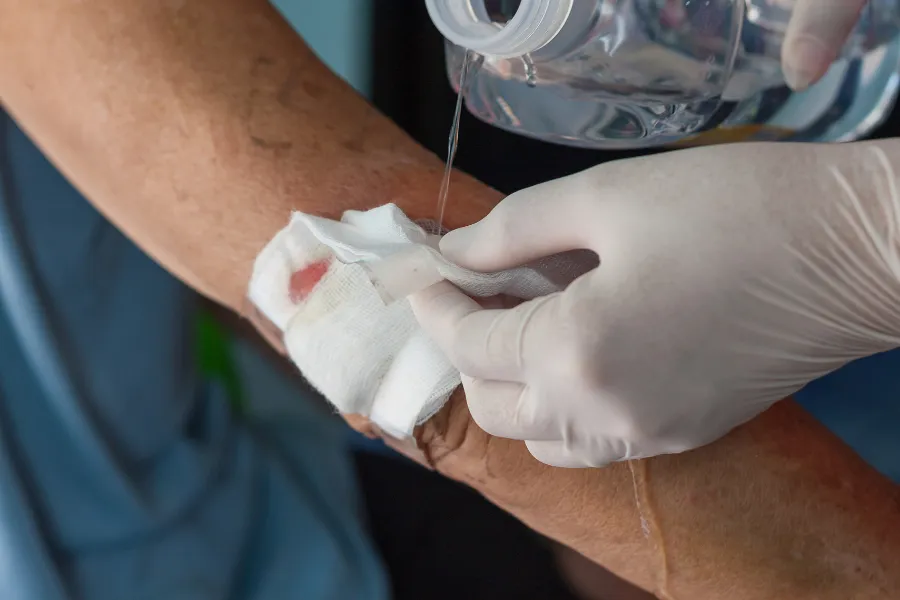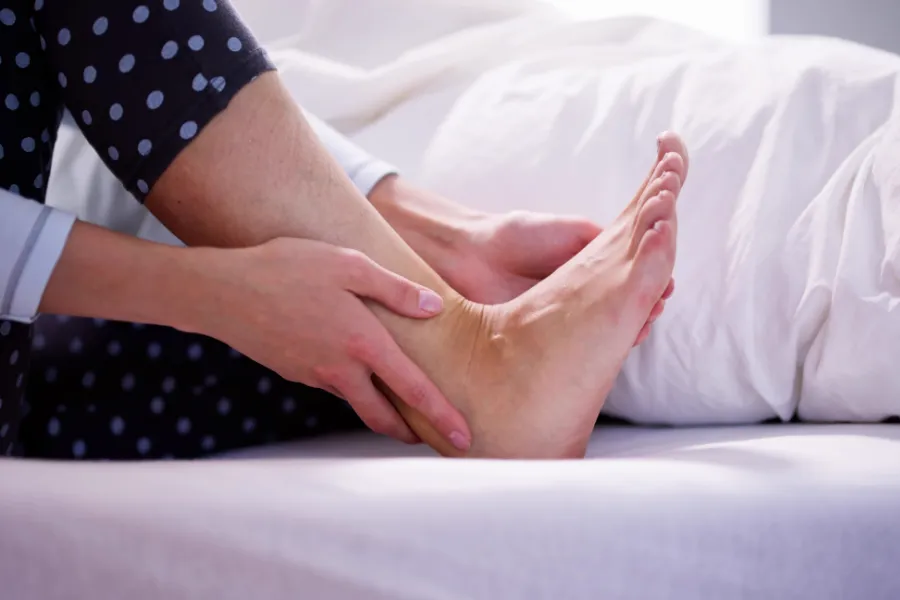Common Causes of Pressure Ulcers
Pressure ulcers can result from several factors that affect skin health and blood flow. These causes include:
- Prolonged Pressure: Staying in one position for too long reduces blood supply to the skin.
- Friction and Shear: Skin can become damaged from sliding or rubbing against surfaces like bedding or chairs.
- Excess Moisture: Dampness from sweat, incontinence, or wound drainage makes the skin more fragile.
- Poor Nutrition: Lack of essential nutrients slows the body’s ability to heal.

Recognizing the Signs of Pressure Ulcers
It is essential to identify pressure ulcers early to avoid complications. Watch for:
- Skin that is red, purple, or discolored does not improve when pressure is relieved.
- Tender, warm, or cooler skin compared to the surrounding area.
- Open sores, blisters, or drainage from the wound.
- Pain or sensitivity in specific areas of the body.
Who is at Risk?
Some people have a higher risk of developing pressure ulcers due to their health or mobility.
Those most at risk include:
- People who are bedridden or use wheelchairs.
- Individuals with conditions like diabetes, heart disease, or vascular disease.
- Patients recovering from surgery or with limited movement.
- Those who have poor nutrition or hydration.

Steps to Prevent Pressure Ulcers
Preventing pressure ulcers requires attention to skin health and consistent care. Some effective strategies include:
- Frequent Position Changes: Shift your position every two hours to reduce pressure on one area.
- Supportive Devices: Use cushions, mattresses, or heel protectors to ease pressure.
- Daily Skin Checks: Examine your skin for redness, sores, or irritation.
- Proper Skin Care: Keep your skin clean, dry, and moisturized to reduce the risk of breakdown.
- Balanced Diet: Eating enough protein and vitamins and staying hydrated can help maintain healthy skin.
Treatment for Pressure Ulcers
If a pressure ulcer develops, prompt treatment is important to support healing. Treatment options may include:
Cleaning and Dressing the Wound: Keeps the wound clean and protected from further damage.
Pressure Relief Techniques: Specialized cushions or offloading devices help reduce strain on the sore.
Pain Management: Medications or topical treatments may ease discomfort.
Infection Control: Antibiotics may be used if an infection is present.
Advanced Wound Care: Severe cases may require negative pressure therapy or, in some cases, surgery.
How We Can Help
Freedom Health & Wellness provides compassionate care to prevent and treat pressure ulcers. Our team creates personalized care plans based on your needs, helping you manage these wounds while promoting recovery.
If you or a loved one are dealing with pressure ulcers, reach out to us to learn more about treatment options or to schedule an appointment.
Testimonials



